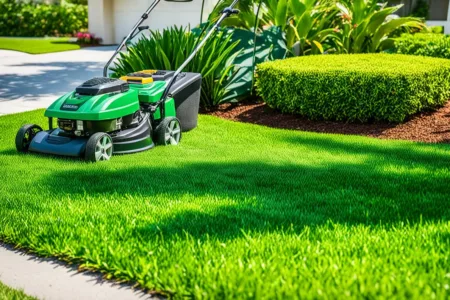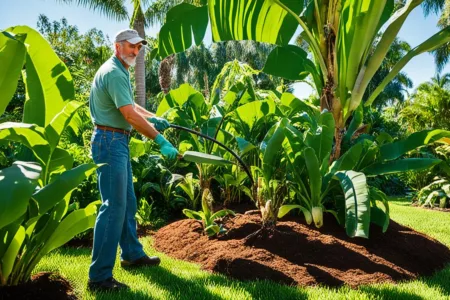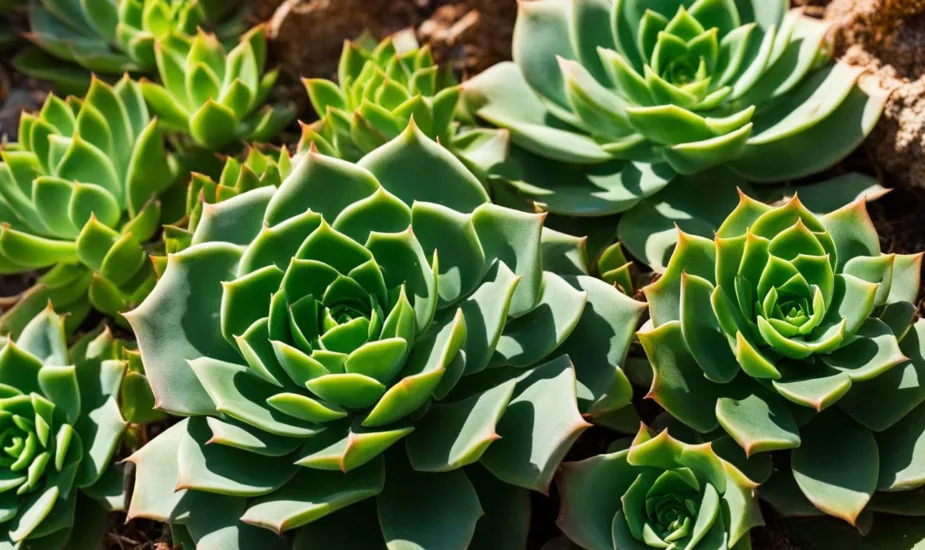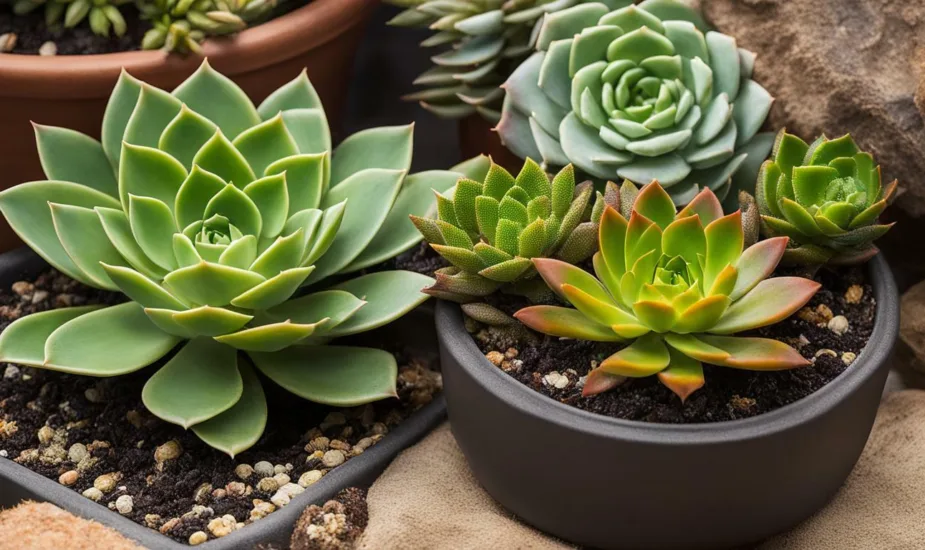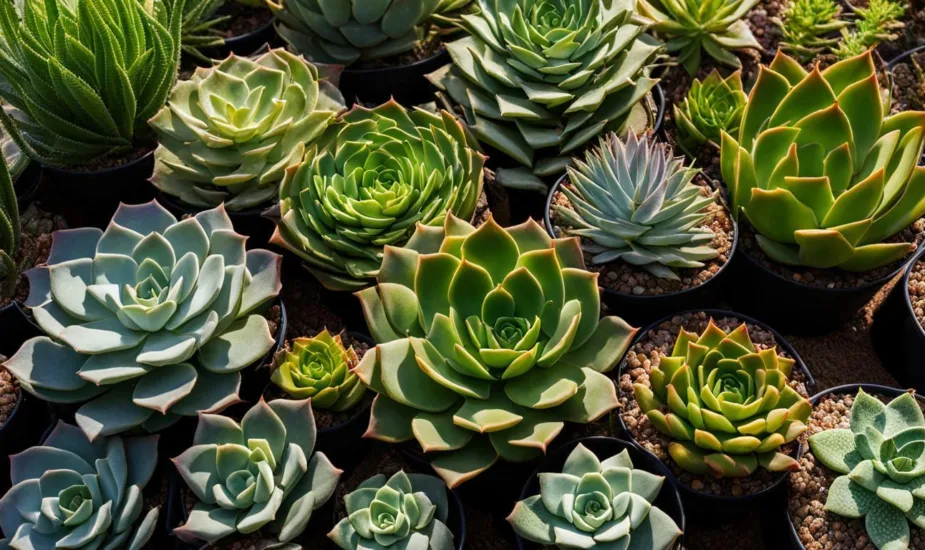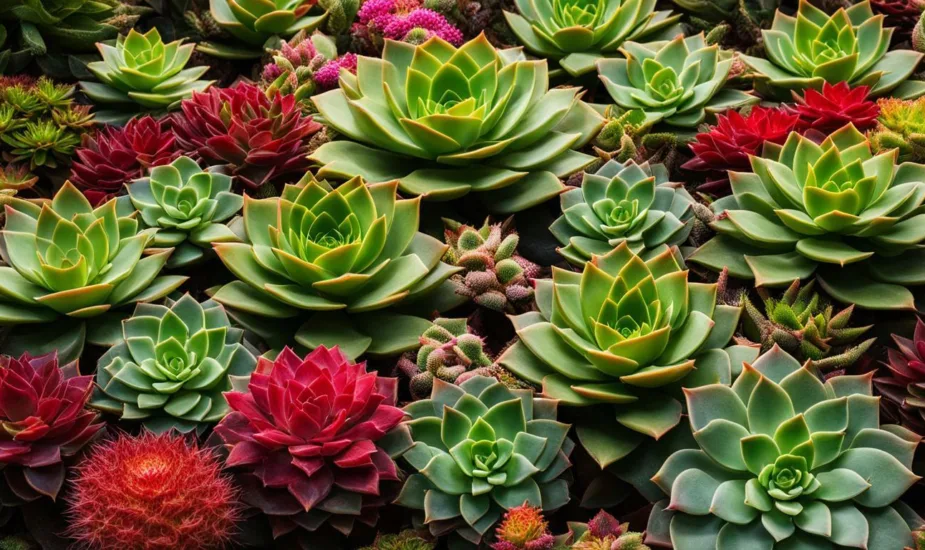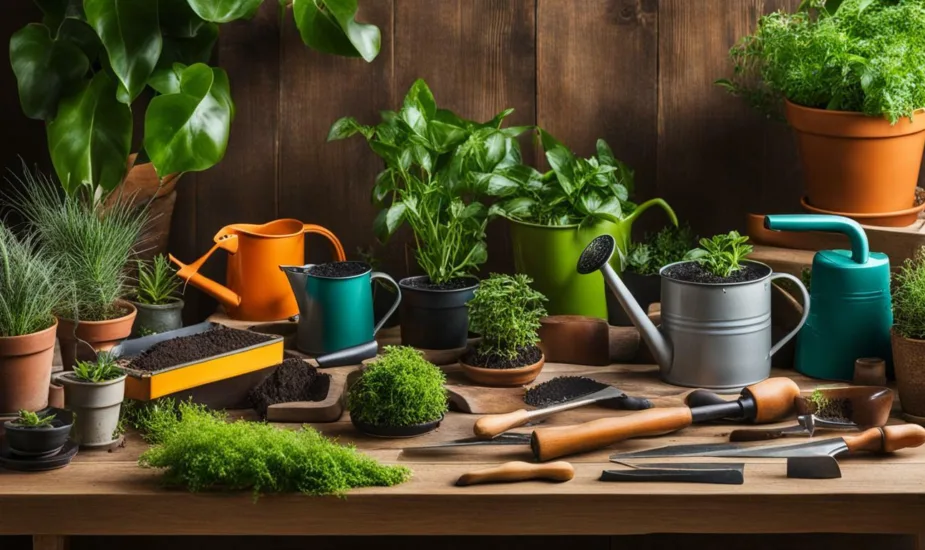Cleaning Secateurs: Easy, Step-by-Step Guide for Gardeners
I've always thought that cleaning a tool wasn't such a crucial thing. Over time, I've come to realize that it's an important element of a beautiful garden for any gardener.

Imagine walking out onto your small apartment balcony, a warm cup of coffee in hand, to find a mini oasis of lush greenery and vibrant fruits. This is the beauty of container fruit gardening, a perfect solution for urban dwellers like me who crave the taste of homegrown fruit but have limited outdoor space.
When I first embarked on my journey into container fruit gardening, I had no idea where to begin. I was a complete novice, with little gardening experience and a desire to bring a touch of nature into my urban environment. That’s when I stumbled upon the world of potted fruit trees, the perfect option for those who want to enjoy fresh fruit without the need for a sprawling garden.
Through trial and error, as well as hours of research, I discovered the secrets to successful container fruit gardening. Now, I want to share my fresh picks guide with you, my fellow urban dwellers and beginner gardeners. In this guide, I’ll walk you through everything you need to know to start your own container fruit garden, from selecting the right varieties to essential gardening techniques and maintenance tips.
Get ready to transform your small space into a thriving oasis of fresh, homegrown fruit. Your taste buds will thank you!
Key Takeaways:
- Container fruit gardening is a great option for urban dwellers and beginners with limited outdoor space.
- Potted fruit trees provide delicious fruit and add beauty to any space.
- Choosing the right fruit tree varieties is crucial for container gardening success.
- Essential urban gardening techniques like soil mix selection and proper drainage are important for fruit tree health.
- Maintenance tips like watering, pruning, and overwintering are essential for container fruit gardening.
The Appeal of Container Fruit Gardening
Container fruit gardening is a popular choice for both experienced gardeners and beginners alike, offering numerous advantages. Potted fruit trees not only provide delicious fruit but also add beauty and greenery to any space. Whether you have limited outdoor areas such as balconies or patios or simply want to optimize your gardening space, container fruit gardening is the perfect solution. By utilizing pots, you can enjoy the benefits of space-saving gardening while still reaping the rewards of a bountiful fruit harvest.
Why Choose Potted Fruit Trees?
Potted fruit trees are a versatile option for any garden, providing an array of benefits. Here are a few reasons why you might consider choosing potted fruit trees for your container fruit garden:
- Flexibility: Potted fruit trees can be moved around, allowing you to optimize sunlight and shade for optimal growth and fruit production.
- Aesthetics: The beauty and greenery of fruit trees add visual appeal to any space, adding a touch of nature to balconies, patios, or even indoor environments.
- Convenience: With potted fruit trees, you have easy access to your favorite fruits right outside your doorstep, eliminating the need for travel to a local grocery store.
Benefits of Space-Saving Gardening
One of the key advantages of container fruit gardening is the ability to save space. With the challenges of limited outdoor areas in urban environments, container gardening allows you to make the most of your available space. By utilizing pots, you can enjoy the benefits of gardening in a compact and efficient manner. Whether you have a small balcony, rooftop, or even a windowsill, container fruit gardening makes it possible to grow your own fresh and delicious fruits without requiring a large plot of land.
Optimizing Sunlight and Shade for Container Trees
Optimizing sunlight and shade is essential for the health and growth of container fruit trees. By strategically moving your potted trees, you can ensure they receive the ideal amount of sunlight each day. Observing your trees and understanding their sunlight requirements is crucial for their overall well-being. If your trees are not getting enough sunlight, they may not bear fruit, while excess sunlight can cause stress or sunburn. With container gardening, you have the flexibility to adjust the positioning of your fruit trees to optimize their exposure to sunlight and shade.
Whether you have limited outdoor space or simply want to make the most of your gardening area, container fruit gardening offers numerous benefits. With potted fruit trees, you can enjoy not just the fruits but also the beauty they bring to your surroundings. By optimizing sunlight and shade, you can ensure that your container trees thrive and produce an abundant harvest. Let’s explore how to select the right fruit tree varieties for your container garden in the next section.
Selecting the Right Varieties for Your Container Fruit Garden

A close-up of a hand selecting ripe fruit from a selection of containers. The hand is carefully examining each piece of fruit, feeling for its ripeness and texture. The containers are small and varied in shape and size, with some made of terracotta and others of plastic. Sunlight streams in from the side, casting a warm glow on the scene. In the background, blurred out, are rows of other fruit trees waiting to be selected for the container garden.
When it comes to container fruit gardening, selecting the right fruit tree varieties is essential for success. With limited space in a container, it’s important to choose trees that are suitable for small space gardening. Dwarf and miniature varieties are ideal as they have smaller root systems and mature heights, making them a perfect fit for confined spaces.
Not all fruit tree varieties thrive in containers, so it’s crucial to consider the specific climate and growing conditions of your area. Certain varieties are better suited for container gardening, as they are more adaptable to the limited space and environmental conditions.
Here are some key factors to consider when selecting fruit tree varieties for your container fruit garden:
- Size: Look for apple, peach, or cherry trees that are labeled as dwarf or miniature. These varieties have been bred to stay compact and are well-suited for container growth.
- Pollination: Some fruit trees require cross-pollination with another variety to produce fruit. If you have limited space, consider self-pollinating varieties or select two different varieties that can pollinate each other in a small area.
- Climate: Pay attention to the cold hardiness and heat tolerance of fruit tree varieties. Choose varieties that can withstand the specific climate conditions in your area to increase their chances of success in containers.
- Fruit Quality: Consider the taste, size, and ripening time of the fruit produced by different varieties. Choose varieties that are known for their excellent flavor and are suitable for your preferences and culinary needs.
Taking the time to research and select the right varieties for your container fruit garden will set the stage for a bountiful harvest and a thriving garden. Now let’s move on to the next section to learn essential urban gardening techniques for your container fruit trees.
Essential Urban Gardening Techniques for Thriving Fruit Trees

Show a container overflowing with fresh fruit, nestled between tall buildings. A hand reaches in to pluck a ripe piece of fruit, while various urban gardening tools (such as handheld pruning shears and watering canisters) sit nearby. The container is surrounded by smaller potted plants, showcasing how even in a small space, one can create a thriving fruit garden. The overall tone of the image should be bright and optimistic, capturing the joy of growing fresh produce in an urban setting.
In order to ensure the health and abundance of your container fruit trees, it is important to employ essential urban gardening techniques. Proper soil mix, adequate drainage, and fertilization are key factors that contribute to the success of your fruit tree cultivation.
Choosing the Ideal Soil Mix
One of the first steps in container fruit gardening is selecting the ideal soil mix for your fruit trees. A well-balanced and nutrient-rich soil mixture will provide the necessary support and nourishment for your trees to thrive. The ideal soil mix for container fruit trees should:
- Have good water retention capabilities to prevent excessive drying out
- Offer proper drainage to prevent waterlogging and root rot
- Contain a mixture of organic matter, such as compost or well-rotted manure, to provide essential nutrients
- Be well-aerated to promote healthy root development
It is recommended to use a high-quality potting mix specifically formulated for fruit trees in containers. This will ensure that your trees receive the necessary nutrients and have optimal growing conditions.
The Importance of Proper Drainage
Proper drainage is crucial for container fruit trees to prevent waterlogging and root rot. Without adequate drainage, excess water can cause the roots to suffocate and result in tree decline or even death. To ensure proper drainage:
- Choose pots with drainage holes at the bottom
- Use a layer of stones or broken pottery at the bottom of the pot to facilitate water drainage
- Avoid overwatering and allow the top few inches of soil to dry out between watering sessions
By maintaining proper drainage, you can help your fruit trees avoid water-related issues and promote healthy root growth.
Fertilizing Container Fruit Trees
Fertilizing your container fruit trees is essential to replenish nutrients and support healthy growth. Containerized trees have limited access to natural soil nutrients, so it’s important to provide them with regular fertilization. Here are some tips for fertilizing your container fruit trees:
- Use a slow-release organic fertilizer formulated for fruit trees
- Follow the manufacturer’s instructions for application rates and frequency
- Apply the fertilizer evenly around the tree’s dripline
- Water the tree thoroughly after fertilization to help distribute the nutrients
Regular fertilization will help ensure that your fruit trees receive the necessary nutrients to produce abundant and flavorful harvests.
| Urban Gardening Techniques for Thriving Fruit Trees | Ideal Soil Mix | Proper Drainage | Fertilizing Container Fruit Trees |
|---|---|---|---|
| Benefits | – Provides necessary support and nutrients – Ensures healthy root development – Promotes optimal growing conditions | – Prevents water logging and root rot – Facilitates healthy root growth | – Replenishes nutrients – Supports healthy growth – Promotes abundant harvests |
| Importance | – Enables nutrient uptake – Enhances overall plant health | – Prevents water-related issues – Maintains root health | – Provides essential nutrients – Supports fruit production |
| Guidelines | – Use well-balanced soil mix – Include organic matter for nutrients – Ensure good water retention and drainage | – Choose pots with drainage holes – Use bottom layer for drainage support – Avoid overwatering | – Use slow-release organic fertilizer – Follow application instructions – Water thoroughly after fertilizing |
Container Fruit Gardening Maintenance Tips
Imagine walking out onto your small apartment balcony, a warm cup of coffee in hand, to find a mini oasis of lush greenery and vibrant fruits. This is the beauty of container fruit gardening, a perfect solution for urban dwellers like me who crave the taste of homegrown fruit but have limited outdoor space.
When I first embarked on my journey into container fruit gardening, I had no idea where to begin. I was a complete novice, with little gardening experience and a desire to bring a touch of nature into my urban environment. That’s when I stumbled upon the world of potted fruit trees, the perfect option for those who want to enjoy fresh fruit without the need for a sprawling garden.
Through trial and error, as well as hours of research, I discovered the secrets to successful container fruit gardening. Now, I want to share my fresh picks guide with you, my fellow urban dwellers and beginner gardeners. In this guide, I’ll walk you through everything you need to know to start your own container fruit garden, from selecting the right varieties to essential gardening techniques and maintenance tips.
Get ready to transform your small space into a thriving oasis of fresh, homegrown fruit. Your taste buds will thank you!
Key Takeaways:
- Container fruit gardening is a great option for urban dwellers and beginners with limited outdoor space.
- Potted fruit trees provide delicious fruit and add beauty to any space.
- Choosing the right fruit tree varieties is crucial for container gardening success.
- Essential urban gardening techniques like soil mix selection and proper drainage are important for fruit tree health.
- Maintenance tips like watering, pruning, and overwintering are essential for container fruit gardening.
The Appeal of Container Fruit Gardening
Container fruit gardening is a popular choice for both experienced gardeners and beginners alike, offering numerous advantages. Potted fruit trees not only provide delicious fruit but also add beauty and greenery to any space. Whether you have limited outdoor areas such as balconies or patios or simply want to optimize your gardening space, container fruit gardening is the perfect solution. By utilizing pots, you can enjoy the benefits of space-saving gardening while still reaping the rewards of a bountiful fruit harvest.
Why Choose Potted Fruit Trees?
Potted fruit trees are a versatile option for any garden, providing an array of benefits. Here are a few reasons why you might consider choosing potted fruit trees for your container fruit garden:
- Flexibility: Potted fruit trees can be moved around, allowing you to optimize sunlight and shade for optimal growth and fruit production.
- Aesthetics: The beauty and greenery of fruit trees add visual appeal to any space, adding a touch of nature to balconies, patios, or even indoor environments.
- Convenience: With potted fruit trees, you have easy access to your favorite fruits right outside your doorstep, eliminating the need for travel to a local grocery store.
Benefits of Space-Saving Gardening
One of the key advantages of container fruit gardening is the ability to save space. With the challenges of limited outdoor areas in urban environments, container gardening allows you to make the most of your available space. By utilizing pots, you can enjoy the benefits of gardening in a compact and efficient manner. Whether you have a small balcony, rooftop, or even a windowsill, container fruit gardening makes it possible to grow your own fresh and delicious fruits without requiring a large plot of land.
Optimizing Sunlight and Shade for Container Trees
Optimizing sunlight and shade is essential for the health and growth of container fruit trees. By strategically moving your potted trees, you can ensure they receive the ideal amount of sunlight each day. Observing your trees and understanding their sunlight requirements is crucial for their overall well-being. If your trees are not getting enough sunlight, they may not bear fruit, while excess sunlight can cause stress or sunburn. With container gardening, you have the flexibility to adjust the positioning of your fruit trees to optimize their exposure to sunlight and shade.
Whether you have limited outdoor space or simply want to make the most of your gardening area, container fruit gardening offers numerous benefits. With potted fruit trees, you can enjoy not just the fruits but also the beauty they bring to your surroundings. By optimizing sunlight and shade, you can ensure that your container trees thrive and produce an abundant harvest. Let’s explore how to select the right fruit tree varieties for your container garden in the next section.
Selecting the Right Varieties for Your Container Fruit Garden

A close-up of a hand selecting ripe fruit from a selection of containers. The hand is carefully examining each piece of fruit, feeling for its ripeness and texture. The containers are small and varied in shape and size, with some made of terracotta and others of plastic. Sunlight streams in from the side, casting a warm glow on the scene. In the background, blurred out, are rows of other fruit trees waiting to be selected for the container garden.
When it comes to container fruit gardening, selecting the right fruit tree varieties is essential for success. With limited space in a container, it’s important to choose trees that are suitable for small space gardening. Dwarf and miniature varieties are ideal as they have smaller root systems and mature heights, making them a perfect fit for confined spaces.
Not all fruit tree varieties thrive in containers, so it’s crucial to consider the specific climate and growing conditions of your area. Certain varieties are better suited for container gardening, as they are more adaptable to the limited space and environmental conditions.
Here are some key factors to consider when selecting fruit tree varieties for your container fruit garden:
- Size: Look for apple, peach, or cherry trees that are labeled as dwarf or miniature. These varieties have been bred to stay compact and are well-suited for container growth.
- Pollination: Some fruit trees require cross-pollination with another variety to produce fruit. If you have limited space, consider self-pollinating varieties or select two different varieties that can pollinate each other in a small area.
- Climate: Pay attention to the cold hardiness and heat tolerance of fruit tree varieties. Choose varieties that can withstand the specific climate conditions in your area to increase their chances of success in containers.
- Fruit Quality: Consider the taste, size, and ripening time of the fruit produced by different varieties. Choose varieties that are known for their excellent flavor and are suitable for your preferences and culinary needs.
Taking the time to research and select the right varieties for your container fruit garden will set the stage for a bountiful harvest and a thriving garden. Now let’s move on to the next section to learn essential urban gardening techniques for your container fruit trees.
Essential Urban Gardening Techniques for Thriving Fruit Trees

Show a container overflowing with fresh fruit, nestled between tall buildings. A hand reaches in to pluck a ripe piece of fruit, while various urban gardening tools (such as handheld pruning shears and watering canisters) sit nearby. The container is surrounded by smaller potted plants, showcasing how even in a small space, one can create a thriving fruit garden. The overall tone of the image should be bright and optimistic, capturing the joy of growing fresh produce in an urban setting.
In order to ensure the health and abundance of your container fruit trees, it is important to employ essential urban gardening techniques. Proper soil mix, adequate drainage, and fertilization are key factors that contribute to the success of your fruit tree cultivation.
Choosing the Ideal Soil Mix
One of the first steps in container fruit gardening is selecting the ideal soil mix for your fruit trees. A well-balanced and nutrient-rich soil mixture will provide the necessary support and nourishment for your trees to thrive. The ideal soil mix for container fruit trees should:
- Have good water retention capabilities to prevent excessive drying out
- Offer proper drainage to prevent waterlogging and root rot
- Contain a mixture of organic matter, such as compost or well-rotted manure, to provide essential nutrients
- Be well-aerated to promote healthy root development
It is recommended to use a high-quality potting mix specifically formulated for fruit trees in containers. This will ensure that your trees receive the necessary nutrients and have optimal growing conditions.
The Importance of Proper Drainage
Proper drainage is crucial for container fruit trees to prevent waterlogging and root rot. Without adequate drainage, excess water can cause the roots to suffocate and result in tree decline or even death. To ensure proper drainage:
- Choose pots with drainage holes at the bottom
- Use a layer of stones or broken pottery at the bottom of the pot to facilitate water drainage
- Avoid overwatering and allow the top few inches of soil to dry out between watering sessions
By maintaining proper drainage, you can help your fruit trees avoid water-related issues and promote healthy root growth.
Fertilizing Container Fruit Trees
Fertilizing your container fruit trees is essential to replenish nutrients and support healthy growth. Containerized trees have limited access to natural soil nutrients, so it’s important to provide them with regular fertilization. Here are some tips for fertilizing your container fruit trees:
- Use a slow-release organic fertilizer formulated for fruit trees
- Follow the manufacturer’s instructions for application rates and frequency
- Apply the fertilizer evenly around the tree’s dripline
- Water the tree thoroughly after fertilization to help distribute the nutrients
Regular fertilization will help ensure that your fruit trees receive the necessary nutrients to produce abundant and flavorful harvests.
| Urban Gardening Techniques for Thriving Fruit Trees | Ideal Soil Mix | Proper Drainage | Fertilizing Container Fruit Trees |
|---|---|---|---|
| Benefits | – Provides necessary support and nutrients – Ensures healthy root development – Promotes optimal growing conditions | – Prevents water logging and root rot – Facilitates healthy root growth | – Replenishes nutrients – Supports healthy growth – Promotes abundant harvests |
| Importance | – Enables nutrient uptake – Enhances overall plant health | – Prevents water-related issues – Maintains root health | – Provides essential nutrients – Supports fruit production |
| Guidelines | – Use well-balanced soil mix – Include organic matter for nutrients – Ensure good water retention and drainage | – Choose pots with drainage holes – Use bottom layer for drainage support – Avoid overwatering | – Use slow-release organic fertilizer – Follow application instructions – Water thoroughly after fertilizing |
Container Fruit Gardening Maintenance Tips

A hand holding pruning shears trimming a vine overflowing from a container, with ripe fruit visible in the background.
Maintenance is an important aspect of container fruit gardening to ensure the continued health and productivity of your fruit trees. Proper care and attention will help your trees thrive and provide you with abundant and delicious fruit. Here are some essential maintenance tips to keep in mind:
Watering Your Potted Fruit Trees
Watering your potted fruit trees correctly is essential for their health and growth. It’s important to find the right balance and avoid both under and overwatering. Regularly check the moisture level of the soil by inserting your finger about an inch deep. If the soil feels dry, it’s time to water. Ensure that water reaches all parts of the container and allow excess water to drain. Be mindful of providing adequate water during hot, dry weather and adjust your watering schedule accordingly. Remember, consistent and proper watering is key to maintaining healthy and productive fruit trees.
Pruning for Health and Abundance
Pruning plays a vital role in maintaining the health and abundance of your container fruit trees. Regular pruning helps remove dead, damaged, or diseased branches, ensuring that the tree can allocate its resources to healthy growth and fruit production. It also helps shape the tree, promoting better air circulation and sunlight penetration, both of which are essential for fruit development. Prune during the dormant season, when the tree is not actively growing, while avoiding periods of extreme cold. Use clean and sharp pruning tools to make clean cuts, and always follow proper pruning techniques to avoid damaging the tree.
Seasonal Care and Overwintering Strategies
Seasonal care and overwintering strategies are crucial for protecting and caring for your container fruit trees during the colder months. Before the onset of winter, prepare your trees by removing any fallen leaves or debris from the container. Insulate the pots with mulch or wrap them in burlap to help protect the roots from freezing temperatures. Consider moving your container trees to a sheltered area, such as a garage or shed, or utilize frost protection methods like covers or blankets to shield them from harsh weather conditions. It’s also important to monitor the soil moisture during winter, making sure it doesn’t dry out completely. With proper seasonal care and overwintering strategies, your fruit trees will be ready to thrive when the warmer months return.
| Container Gardening Maintenance | Watering Fruit Trees | Pruning for Health | Seasonal Care |
|---|---|---|---|
| Regular watering ensures proper hydration and growth. | Find the right balance and avoid under or overwatering. | Remove dead, damaged, or diseased branches for overall tree health. | Prepare trees for winter and protect them from freezing temperatures. |
| Monitor soil moisture and adjust watering schedule based on weather conditions. | Check soil moisture regularly and adjust watering as needed. | Prune during the dormant season following proper pruning techniques. | Utilize frost protection methods and monitor soil moisture during winter. |
Conclusion
Container fruit gardening is an incredibly rewarding and accessible way to enjoy the sweetness of homegrown fruit, no matter the limitations of your outdoor space. By following the tips and techniques outlined in this fresh picks guide, you can create a thriving container fruit garden and experience the joys of urban gardening.
With careful selection of fruit tree varieties that are suitable for container growth, you can maximize the potential of your small space. From dwarf and miniature varieties to those that thrive within specific climates, there’s a perfect fruit tree for every container gardener.
Proper maintenance is key to the success of your container fruit garden. By ensuring your trees receive the ideal soil mix, proper drainage, and regular fertilization, you can provide them with the essential nutrients they need to flourish. Additionally, watering correctly, pruning for health and abundance, and implementing seasonal care strategies will keep your fruit trees thriving year round.
So, why wait? Start your container fruit gardening journey today and savor the fruits of your labor. With a little bit of patience, you’ll soon be able to enjoy the delicious taste of homegrown fruit, right at your fingertips. Happy gardening!
FAQ
Why should I choose container fruit gardening?
Container fruit gardening is a great option for those with limited outdoor space or beginners. It allows you to grow delicious fruit in pots, adding beauty and greenery to any space. It is also a space-saving solution for small areas like balconies and patios.
What are the benefits of space-saving gardening?
Space-saving gardening, such as container fruit gardening, allows you to maximize the use of limited space. It is perfect for urban dwellers or those with small yards. You can enjoy the sweetness of homegrown fruit without needing a large garden.
How can I optimize sunlight and shade for my container fruit trees?
One of the advantages of container gardening is flexibility in moving pots to optimize sunlight and shade. You can position your fruit trees where they receive the optimal conditions for growth and fruit production. Keep in mind that fruit trees generally require 6-8 hours of sunlight per day.
How do I select the right fruit tree varieties for container gardening?
When selecting fruit tree varieties for container gardening, choose dwarf or miniature varieties that are suitable for confined spaces. Consider the specific climate and growing conditions of your area to ensure you choose varieties that are well-suited for container gardening.
What is the ideal soil mix for container fruit trees?
The ideal soil mix for container fruit trees should provide the right nutrients and good drainage. You can use a combination of potting soil, organic matter (like compost), and perlite or vermiculite to improve drainage.
Why is proper drainage important for container fruit trees?
Proper drainage is important to prevent root rot and ensure the health of your container fruit trees. Make sure your pots have drainage holes and use well-draining soil mix to allow excess water to flow out of the container.
How do I fertilize my container fruit trees?
Fertilizing your container fruit trees is essential to replenish nutrients and promote healthy growth. Use a balanced fertilizer formulated for fruit trees, following the instructions on the package to determine the proper amount and frequency of application.
How should I water my potted fruit trees?
Proper watering is crucial to prevent under or overwatering your potted fruit trees. Water the trees deeply and thoroughly, allowing excess water to drain out of the pot. Monitor the moisture levels and adjust watering frequency based on the specific needs of your fruit trees.
Why is pruning important for container fruit trees?
Pruning helps promote the health and abundance of your container fruit trees. It allows you to remove dead or damaged branches and shape the trees for better fruit production. Prune your fruit trees during the dormant season to stimulate new growth.
How should I care for my container fruit trees during the colder months?
Seasonal care and overwintering strategies are important for protecting and caring for your container fruit trees during the colder months. This may include bringing the pots indoors, providing insulation, or using protective coverings to shield the trees from freezing temperatures.
A hand holding pruning shears trimming a vine overflowing from a container, with ripe fruit visible in the background.
Maintenance is an important aspect of container fruit gardening to ensure the continued health and productivity of your fruit trees. Proper care and attention will help your trees thrive and provide you with abundant and delicious fruit. Here are some essential maintenance tips to keep in mind:
Watering Your Potted Fruit Trees
Watering your potted fruit trees correctly is essential for their health and growth. It’s important to find the right balance and avoid both under and overwatering. Regularly check the moisture level of the soil by inserting your finger about an inch deep. If the soil feels dry, it’s time to water. Ensure that water reaches all parts of the container and allow excess water to drain. Be mindful of providing adequate water during hot, dry weather and adjust your watering schedule accordingly. Remember, consistent and proper watering is key to maintaining healthy and productive fruit trees.
Pruning for Health and Abundance
Pruning plays a vital role in maintaining the health and abundance of your container fruit trees. Regular pruning helps remove dead, damaged, or diseased branches, ensuring that the tree can allocate its resources to healthy growth and fruit production. It also helps shape the tree, promoting better air circulation and sunlight penetration, both of which are essential for fruit development. Prune during the dormant season, when the tree is not actively growing, while avoiding periods of extreme cold. Use clean and sharp pruning tools to make clean cuts, and always follow proper pruning techniques to avoid damaging the tree.
Seasonal Care and Overwintering Strategies
Seasonal care and overwintering strategies are crucial for protecting and caring for your container fruit trees during the colder months. Before the onset of winter, prepare your trees by removing any fallen leaves or debris from the container. Insulate the pots with mulch or wrap them in burlap to help protect the roots from freezing temperatures. Consider moving your container trees to a sheltered area, such as a garage or shed, or utilize frost protection methods like covers or blankets to shield them from harsh weather conditions. It’s also important to monitor the soil moisture during winter, making sure it doesn’t dry out completely. With proper seasonal care and overwintering strategies, your fruit trees will be ready to thrive when the warmer months return.
| Container Gardening Maintenance | Watering Fruit Trees | Pruning for Health | Seasonal Care |
|---|---|---|---|
| Regular watering ensures proper hydration and growth. | Find the right balance and avoid under or overwatering. | Remove dead, damaged, or diseased branches for overall tree health. | Prepare trees for winter and protect them from freezing temperatures. |
| Monitor soil moisture and adjust watering schedule based on weather conditions. | Check soil moisture regularly and adjust watering as needed. | Prune during the dormant season following proper pruning techniques. | Utilize frost protection methods and monitor soil moisture during winter. |
Conclusion
Container fruit gardening is an incredibly rewarding and accessible way to enjoy the sweetness of homegrown fruit, no matter the limitations of your outdoor space. By following the tips and techniques outlined in this fresh picks guide, you can create a thriving container fruit garden and experience the joys of urban gardening.
With careful selection of fruit tree varieties that are suitable for container growth, you can maximize the potential of your small space. From dwarf and miniature varieties to those that thrive within specific climates, there’s a perfect fruit tree for every container gardener.
Proper maintenance is key to the success of your container fruit garden. By ensuring your trees receive the ideal soil mix, proper drainage, and regular fertilization, you can provide them with the essential nutrients they need to flourish. Additionally, watering correctly, pruning for health and abundance, and implementing seasonal care strategies will keep your fruit trees thriving year round.
So, why wait? Start your container fruit gardening journey today and savor the fruits of your labor. With a little bit of patience, you’ll soon be able to enjoy the delicious taste of homegrown fruit, right at your fingertips. Happy gardening!
FAQ
Why should I choose container fruit gardening?
Container fruit gardening is a great option for those with limited outdoor space or beginners. It allows you to grow delicious fruit in pots, adding beauty and greenery to any space. It is also a space-saving solution for small areas like balconies and patios.
What are the benefits of space-saving gardening?
Space-saving gardening, such as container fruit gardening, allows you to maximize the use of limited space. It is perfect for urban dwellers or those with small yards. You can enjoy the sweetness of homegrown fruit without needing a large garden.
How can I optimize sunlight and shade for my container fruit trees?
One of the advantages of container gardening is flexibility in moving pots to optimize sunlight and shade. You can position your fruit trees where they receive the optimal conditions for growth and fruit production. Keep in mind that fruit trees generally require 6-8 hours of sunlight per day.
How do I select the right fruit tree varieties for container gardening?
When selecting fruit tree varieties for container gardening, choose dwarf or miniature varieties that are suitable for confined spaces. Consider the specific climate and growing conditions of your area to ensure you choose varieties that are well-suited for container gardening.
What is the ideal soil mix for container fruit trees?
The ideal soil mix for container fruit trees should provide the right nutrients and good drainage. You can use a combination of potting soil, organic matter (like compost), and perlite or vermiculite to improve drainage.
Why is proper drainage important for container fruit trees?
Proper drainage is important to prevent root rot and ensure the health of your container fruit trees. Make sure your pots have drainage holes and use well-draining soil mix to allow excess water to flow out of the container.
How do I fertilize my container fruit trees?
Fertilizing your container fruit trees is essential to replenish nutrients and promote healthy growth. Use a balanced fertilizer formulated for fruit trees, following the instructions on the package to determine the proper amount and frequency of application.
How should I water my potted fruit trees?
Proper watering is crucial to prevent under or overwatering your potted fruit trees. Water the trees deeply and thoroughly, allowing excess water to drain out of the pot. Monitor the moisture levels and adjust watering frequency based on the specific needs of your fruit trees.
Why is pruning important for container fruit trees?
Pruning helps promote the health and abundance of your container fruit trees. It allows you to remove dead or damaged branches and shape the trees for better fruit production. Prune your fruit trees during the dormant season to stimulate new growth.
How should I care for my container fruit trees during the colder months?
Seasonal care and overwintering strategies are important for protecting and caring for your container fruit trees during the colder months. This may include bringing the pots indoors, providing insulation, or using protective coverings to shield the trees from freezing temperatures.
Gardening is a rewarding hobby that requires a lot of hard work and dedication. Keeping your garden tools clean and well-maintained is an essential part of gardening that is often overlooked. In this article, I will guide you through the proper way of cleaning secateurs, which are an essential tool for any gardener. By following these easy steps, you can keep your secateurs in tip-top condition and ensure a healthy and vibrant garden.
Key Takeaways:
- Cleaning secateurs is crucial for maintaining healthy plants and extending the lifespan of the tools.
- Regular cleaning and maintenance can prevent the spread of diseases, increase the lifespan of the tools, and ensure optimal performance.
Why Cleaning Secateurs is Important
As a gardener, keeping your tools in good condition is essential for maintaining a healthy and beautiful garden. Secateurs are among the most commonly used gardening tools and require regular cleaning and maintenance to stay sharp and effective. Here are some key reasons why cleaning secateurs is so important:
- Preventing the spread of diseases: Dirty secateurs can spread diseases and infections between plants as you prune them. When you don’t clean your secateurs regularly, you risk transferring bacteria, fungi, and other harmful microorganisms from one plant to another. This can cause widespread damage to your garden, making it difficult to grow healthy plants in the future.
- Increasing the lifespan of the tools: Secateurs that are not cleaned regularly are more likely to become damaged or dull over time. Dirt, sap, and other debris can clog the blades, making them less effective and more likely to break. Cleaning your secateurs after each use can help prevent this kind of wear and tear, prolonging the life of your tools and saving you money in the long run.
- Ensuring optimal performance: When your secateurs are clean and sharp, they are more efficient and easier to use. Clean blades make cleaner cuts, which are less likely to damage your plants. Sharp blades require less effort to cut through stems, reducing the strain on your hands and wrists. With regular cleaning and maintenance, your secateurs will be a joy to use and will make your gardening tasks quicker and more enjoyable.
Now that you know why cleaning secateurs is so important, let’s take a closer look at the tools and techniques you’ll need to get the job done right.

Tools and Products for Cleaning Secateurs
When it comes to cleaning secateurs, having the right tools and products can make all the difference. Here are the essentials you’ll need:
| Tools | Products |
|---|---|
| Wire brush: A small wire brush will help you remove dirt and debris from hard-to-reach areas. | Mild soap or detergent: Use a gentle, non-toxic soap or detergent to clean the blades and other metal parts. |
| Rubbing alcohol: Rubbing alcohol can be used to disinfect the blades and prevent the spread of diseases. | Sharpening stone: A sharpening stone will help you keep the blades sharp and effective. |
| Lubricating oil: Use a lubricating oil to keep the moving parts of the secateurs working smoothly. |
It’s also important to wear protective gloves during the cleaning process to avoid injury. With these tools in hand, you’ll be well-equipped to keep your secateurs in top condition.

Step-by-Step Guide on Cleaning Secateurs
Cleaning your secateurs regularly can enhance their performance and extend their lifespan. Here’s my easy-to-follow guide for keeping your secateurs in top condition:
- Disassemble the secateurs: Begin by separating the blades. Most secateurs have a bolt that can be unscrewed to release the blades.
- Remove dirt and debris: Use a wire brush to gently scrub away any dirt or debris on the blades.
- Clean the blades: Wipe down the blades with a cloth soaked in rubbing alcohol. This will sanitize the blades and prevent the spread of diseases.
- Sharpen the blades: Check the blades for any signs of dullness or nicks. If necessary, use a sharpening stone to gently sharpen the blades.
- Lubricate the blades: Apply a few drops of lubricating oil to the blades and other moving parts of the secateurs. This will keep the secateurs operating smoothly.
- Reassemble the secateurs: Once you’ve cleaned and oiled the blades, reassemble the secateurs by screwing the bolt back in place.
- Test the secateurs: Before storing the secateurs, test them out on a branch to ensure they are functioning properly.
It’s important to note that you should wear protective gloves while cleaning your secateurs to avoid injury or contact with harmful chemicals.
By following these simple steps, you can ensure that your secateurs remain in excellent condition and that your garden stays healthy and vibrant.
Cleaning Rusty Secateurs
If you live in a humid area or tend to leave your secateurs outside, they may be prone to rust formation. Fortunately, rust is not a death sentence for your tools. With a few simple tips, you can remove rust and restore your secateurs to their former glory.
The first step in cleaning rusty secateurs is to disassemble them. This will allow you to access all the parts that may be affected by rust. Next, you can use a wire brush to remove any visible rust and dirt. Be sure to wear protective gloves to prevent injury.
| Tip: | You can also use vinegar or rust dissolver to remove rust. Just be sure to rinse the secateurs thoroughly and dry them off to prevent further rust formation. |
|---|
Once the rust has been removed, inspect the blades for any signs of pitting or damage. If the blades are in good shape, proceed to clean them as usual. If not, you may need to sharpen or replace them.
After cleaning and sharpening (if necessary), be sure to lubricate the moving parts with oil to prevent rust from forming again. Store your secateurs in a dry place and avoid leaving them outside to prevent rust formation in the future.
Maintaining Clean Secateurs
Regular maintenance is key to keeping your secateurs in top shape and ensuring optimal performance. Here are some tips for maintaining clean secateurs:
- Remove sap, dirt, and moisture after each use: Use a wire brush to remove any debris from the blades, and wipe them down with a clean cloth. Make sure to dry the blades thoroughly to prevent rust formation.
- Sharpen the blades regularly: Dull blades can damage plants and make cutting more difficult. Use a sharpening stone or file to sharpen the blades as needed, following the manufacturer’s instructions.
- Lubricate moving parts: Apply lubricating oil to the pivot point and other moving parts of the secateurs to ensure smooth operation. Wipe away any excess oil with a clean cloth.
By following these simple maintenance tips, you can prolong the lifespan of your secateurs and make your gardening tasks more enjoyable and efficient.

Common Mistakes to Avoid
As with any gardening tool, cleaning secateurs requires attention to detail and careful handling. Here are some common mistakes that gardeners should avoid when cleaning their secateurs:
- Neglecting to clean after use: It’s important to clean secateurs after each use to prevent the buildup of sap, dirt, and debris. Neglecting to clean your secateurs regularly can lead to the accumulation of harmful bacteria and diseases.
- Using harsh chemicals: Avoid using harsh chemicals to clean your secateurs, as they can cause damage to the blades and other parts. Instead, opt for mild soap or detergent, and rinse the secateurs thoroughly with water.
- Improper storage: Leaving your secateurs out in the elements or tossing them into a toolbox can cause damage to the blades and other moving parts. Store your secateurs in a cool, dry place, preferably in a dedicated container or tool holster.
- Neglecting to sharpen and lubricate the blades regularly: Failure to sharpen and lubricate the blades regularly can cause them to become dull and ineffective. Keep the blades sharp with a sharpening stone, and lubricate the moving parts with a high-quality oil.
By avoiding these common mistakes, you can ensure that your secateurs stay in good working order and provide you with years of reliable service.

Tips for Safe Cleaning
Cleaning secateurs can be a potentially dangerous task if proper safety precautions are not taken. Here are some tips to ensure safe cleaning:
- Wear protective gloves: Before starting to clean the secateurs, it’s important to wear protective gloves to prevent cuts and scratches.
- Use caution when handling blades: The blades of the secateurs are sharp and can cause injury if mishandled. Always hold the secateurs by the handles and avoid touching the blades directly.
- Avoid contact with harmful chemicals: Some cleaning products may contain harmful chemicals that can cause skin irritation or respiratory problems. Always read the labels and follow the instructions carefully.
- Proper tool storage: After cleaning, store the secateurs in a safe and secure place, away from children and pets. This will prevent accidents and prolong the life of the tool.

“Remember, safety comes first when cleaning secateurs. Take the necessary precautions to avoid injury and ensure a positive gardening experience.”
Other Maintenance Tips for Gardening Tools
In addition to cleaning and maintaining secateurs, it’s important to take care of other gardening tools to ensure they work properly and last longer. Here are some tips to keep in mind:
- Pruning shears should be cleaned and sharpened regularly. Remove any sap or debris with a soap and water mixture and sharpen the blades with a sharpening stone or file. Lubricate the moving parts with oil.
- Hedge trimmers should also be cleaned after each use to prevent the spread of diseases. Use a wire brush to remove any dirt or sap, and oil the blades and pivot point. Sharpen the blades as needed.
- For other tools such as shovels, hoes, and rakes, it’s important to clean them after each use to prevent rust and other damage. Wipe them down with a dry cloth, and use a wire brush to remove any dirt or debris. Store them in a dry place.
By following these maintenance tips, you can ensure that your gardening tools stay in top condition and last longer, saving you money in the long run. Regular cleaning and maintenance can also prevent the spread of diseases and pests, keeping your plants healthy and vibrant.
Benefits of Cleaning Secateurs
Cleaning and maintaining secateurs isn’t just about keeping them looking shiny and new. There are numerous benefits that come with regular cleaning and maintenance, which every gardener should take advantage of. Here are some of the top benefits:
- Prevents the spread of diseases: When using secateurs to prune or clip plants, it’s easy for bacteria and diseases to spread from one plant to another. Keeping your secateurs clean and disinfected can help prevent this from happening, keeping your garden healthy and vibrant.
- Improves tool lifespan: Regular cleaning and maintenance can help extend the lifespan of your secateurs, saving you money in the long run. By keeping blades sharp, removing debris, and lubricating moving parts, you can ensure that your secateurs will last for years to come.
- Ensures optimal performance: When secateurs are dirty or dull, they can become difficult to use, causing frustration and making pruning tasks more challenging than they need to be. By cleaning and sharpening your secateurs regularly, you can ensure that they perform optimally, making your gardening tasks much easier and more enjoyable.
- Contributes to a healthier garden: Clean, sharp secateurs can help create healthier, stronger plants. By using sharp blades, you can make clean cuts that promote healthy growth and prevent damage to the plant. Additionally, removing diseased parts of a plant with clean secateurs can help prevent the spread of illness and promote overall plant health.
With these benefits in mind, it’s clear that cleaning and maintaining your secateurs is an essential task for any gardener. Follow the steps outlined in this guide and enjoy the benefits of healthy, vibrant plants and a longer-lasting, effective tool.

Conclusion
In conclusion, maintaining clean secateurs is crucial for any gardener looking to keep their plants and tools healthy and thriving. Regular cleaning and maintenance can prevent the spread of diseases, increase the lifespan of the tools, and ensure optimal performance.
To clean secateurs effectively, be sure to use essential tools and products such as mild soap or detergent, a wire brush, rubbing alcohol, a sharpening stone, and lubricating oil. Remember to wear protective gloves during the cleaning process to avoid any accidents.
Avoid common mistakes such as neglecting to clean secateurs after use, using harsh chemicals, improper storage, and neglecting to sharpen and lubricate the blades regularly.
Remember to take safety precautions when cleaning secateurs, such as handling sharp blades with caution and storing tools properly to prevent accidents.
Consider applying these maintenance tips to other gardening tools such as pruning shears and hedge trimmers to keep all your equipment in tip-top shape.
By regularly cleaning and maintaining your secateurs, you can ensure a healthy and vibrant garden, save money by extending the lifespan of the tools, and ultimately have a more enjoyable gardening experience. So go ahead and give your secateurs some TLC today!
FAQ
Q: Why is cleaning secateurs important?
A: Cleaning secateurs is important for several reasons. Regular cleaning and maintenance can prevent the spread of diseases, increase the lifespan of the tools, and ensure optimal performance.
Q: What tools and products are needed for cleaning secateurs?
A: To clean secateurs, you will need mild soap or detergent, a wire brush, rubbing alcohol, a sharpening stone, lubricating oil, and protective gloves.
Q: How do I clean secateurs step-by-step?
A: Follow these steps to clean secateurs effectively: 1) Disassemble the secateurs, 2) Remove dirt and debris, 3) Clean the blades, 4) Sharpen if necessary, and 5) Lubricate the moving parts.
Q: How do I clean rusty secateurs?
A: To clean rusty secateurs, you can use vinegar or a rust dissolver. It is also important to prevent rust formation and store secateurs properly.
Q: How do I maintain clean secateurs?
A: After each use, remove sap, dirt, and moisture from the secateurs. Regularly sharpen and lubricate the blades to ensure optimal performance.
Q: What are common mistakes to avoid when cleaning secateurs?
A: Common mistakes to avoid include neglecting to clean the secateurs after use, using harsh chemicals, improper storage, and neglecting to sharpen and lubricate the blades regularly.
Q: What are some safety tips for cleaning secateurs?
A: When cleaning secateurs, wear protective gloves, use caution when handling sharp blades, and avoid contact with harmful chemicals. Proper tool storage is also important to prevent accidents.
Q: Are there other maintenance tips for gardening tools?
A: Yes, other maintenance tips include cleaning and maintaining pruning shears, hedge trimmers, and other equipment commonly used in gardening.
Q: What are the benefits of cleaning secateurs?
A: Regularly cleaning secateurs can improve the overall health and appearance of plants, save money by extending the lifespan of the tools, and contribute to a more enjoyable gardening experience.
 Little Garden Tips
Little Garden Tips

